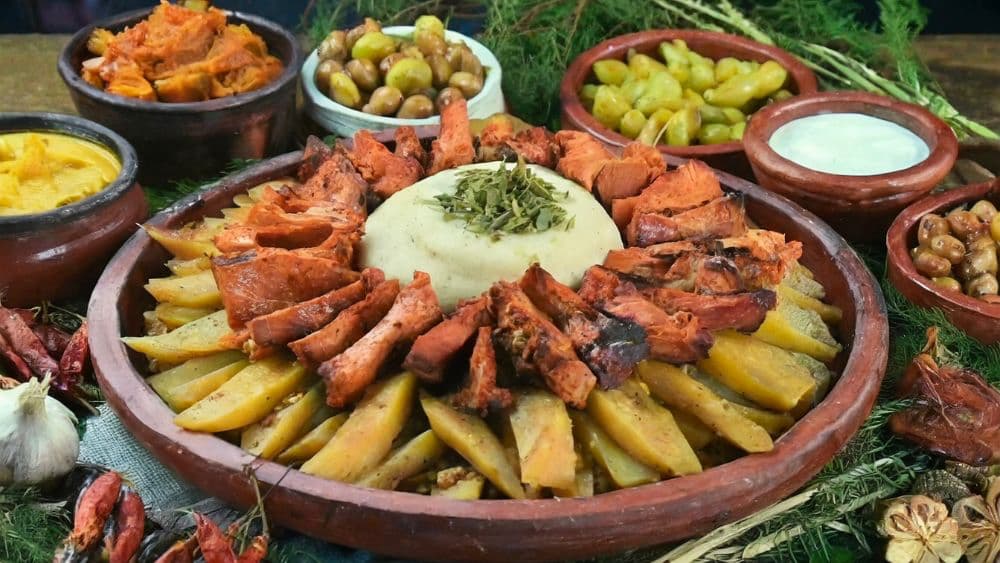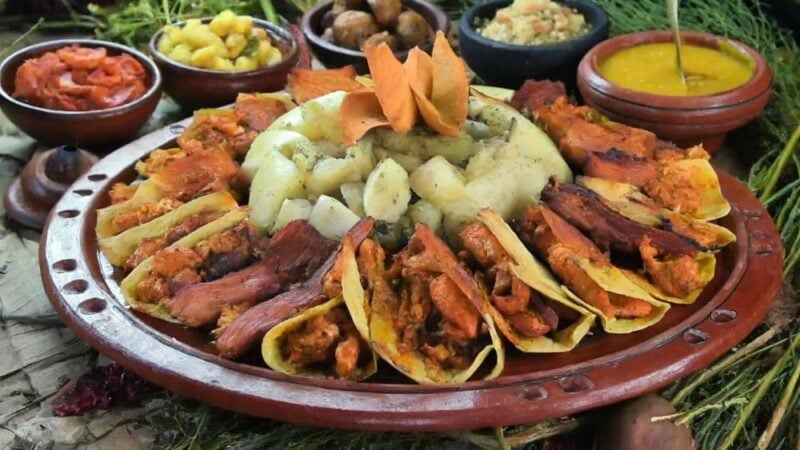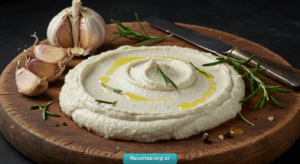
Welcome to today’s new recipe in Paulina Kitchen! In America there are foods that fuse the ancestral wisdom of the native peoples with the ingredients and techniques brought by the colonizers. But there are some recipes that maintain the purity of their origins and were not modified by the influence of external cultures. A clear example of this is the Pachamancaa meal made with native ingredients and a traditional cooking method.
Surely when you see the original recipe you wonder how you are going to make it at home if you don’t have a place to dig a well in the ground. For this reason, throughout the post we are going to give you modern options to make this incredible dish that connects us with our roots.
Pachamanca, recipe from mother earth
The Pachamanca It is an ancient and delicious culinary tradition from the Andean region of South America, specifically in countries like Peru and Ecuador.
- The name “Pachamanca” comes from quechuawhere “Pacha” means land y “Manca” means ollawhich literally translates as “buried pot”.
This dish represents not only a way of cooking food, but also a celebration of the connection between the land and the products it provides. Not only is it a unique cooking technique, but also a celebration of the connection with Pachamama, mother earth. The preparation ceremony, whether in a hole in the ground or adapted to conventional pots, represents a fusion of tradition, culture and respect for the ingredients that the land provides in this mountainous region.
On the stone, the most traditional cooking method
The Pachamanca a la piedra is a traditional Andean culinary ceremony that stands out for its cooking method in direct contact with hot stones. In this process, ingredients such as meat, potatoes, sweet potatoes and corn are arranged in layers on previously heated stones, generating steamed and smoked cooking.
- This method gives a distinctive flavor and unique texture. In addition to being a delicious dining experience, this practice highlights the ancestral connection between land, food, and community.
The stone Pachamanca recipe is more than a cooking technique; It is a symbol of respect for nature and a celebration of traditions rooted in the Andean region.
What is the surprising preparation of Pachamanca?
The preparation of Pachamanca is a special ceremony that involves cooking a variety of ingredients, such as beef, pork, lamb, chicken, potatoes, sweet potatoes, and corn on the cobamong others.
These ingredients are seasoned with aromatic herbs such as huacatay and achiote (also used in recipes such as Colombian sancocho and sheet cake). They are wrapped in bijao leaves and placed in a hole previously dug in the ground. are added hot stonesthus generating a steamed and smoked at the same time.
The cooking process can last several hours, during which a community celebration. This gastronomic ritual is not only about feeding the body, but also about honor Pachamamamother earth, giving thanks for the fruits she provides.
A simple option to make at home
The Pachamanca to the pot It is a modern variant of the traditional Andean culinary ceremony. Unlike the classic one, which is cooked in a hole in the ground, this version adapts to conventional kitchens. are selected ingredients such as meat, potatoes, sweet potatoes, and cornwhich are seasoned with aromatic herbs.
Although the ritual symbolism of burying food is not involved, the Pachamanca recipe in the pot maintains the distinctive flavor of the traditional version. It is cooked in a pot over the fire, allowing the ingredients to infuse with the characteristic flavors. This contemporary adaptation facilitates the experience of enjoying the unique aromas and flavors without the need for cooking in a hole in the ground.
Chicken pachamanca, modernized version of this recipe
The Pachamanca in chicken pot It is a contemporary version of the traditional Andean culinary ceremony, adapted to suit modern tastes and comfort.
In this dish, chicken joins other traditional ingredients such as potatoes, sweet potatoes and corn, all seasoned with aromatic herbs. Although this variant dispenses with the ritual symbolism of burying food in a hole in the ground, it preserves the distinctive flavor of Pachamanca.
Cooking in a conventional pot over the fire allows the flavors to mingle, creating a delicious combination that reflects the rich Andean culinary heritage. Chicken Pot Pachamanca offers a gastronomic experience that fuses the traditional with the practical, providing an accessible way to enjoy the unique flavors of this ancient dish.
Pork pachamanca for more intense flavors
The Pachamanca of pig It is a modern adaptation of the ancient Andean culinary ceremony. In this variant, pork joins other traditional ingredients such as potatoes, sweet potatoes and corn on the cob, all seasoned with characteristic aromatic herbs.
Although it dispenses with the symbolism of burying food in a hole in the ground, the recipe preserves the essence of the connection between the land and the products it offers. Cooking in a conventional pot over the fire allows the flavors to blend, creating a unique combination that pays homage to the rich Andean culinary heritage. This dish is a gastronomic experience and a celebration of the diversity of flavors, fusing traditional with the practicality of contemporary cuisine.
Follow me on Instagram (here)
And on YouTube I upload new videos every week (click here)
Thanks, see you next time! 🙂
Pachamanca Recipe
Yield: 8 servings
Preparation time: 2 hours
Ingredients
- Beef, pork or lamb, cut into pieces
- Chicken, in prey
- Potatoes, peeled and cut into halves or quarters
- Sweet potatoes, peeled and cut into pieces
- Corn cobs, cut into pieces
- Bijao sheets or aluminum foil, to wrap
- Aromatic herbs such as huacatay and annatto
- Salt to taste
How to make the traditional and ancestral Pachamanca recipe
- Dig a hole in the ground and place large stones inside. Turn them on and wait for them to heat up well.
- Season the meat and vegetables with aromatic herbs and salt to taste. Wrap in bijao leaves or aluminum foil, forming packages.
- Place on the hot stones in the hole. Cover with more leaves and soil, creating a natural oven.
- Cook for 2-3 hours until the ingredients are tender and cooked. Dig up and serve directly from the hole.

Source: www.paulinacocina.net


